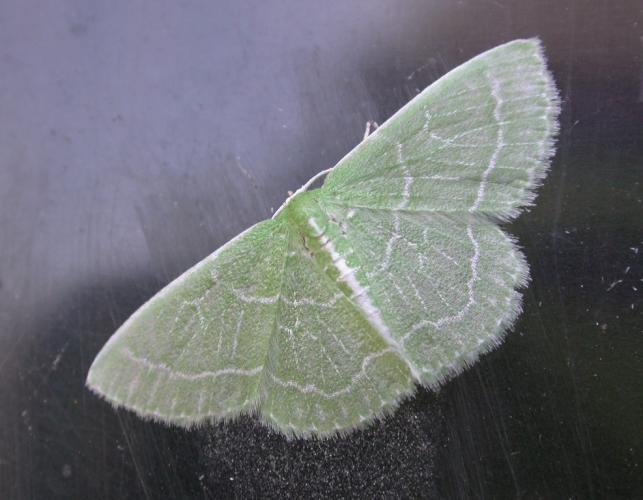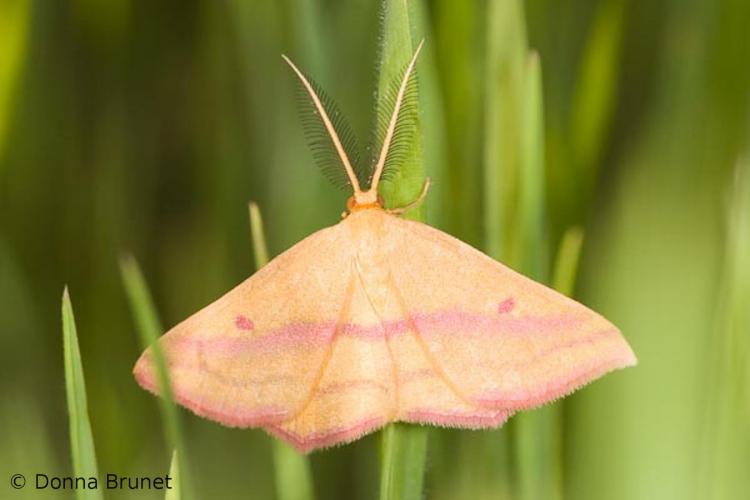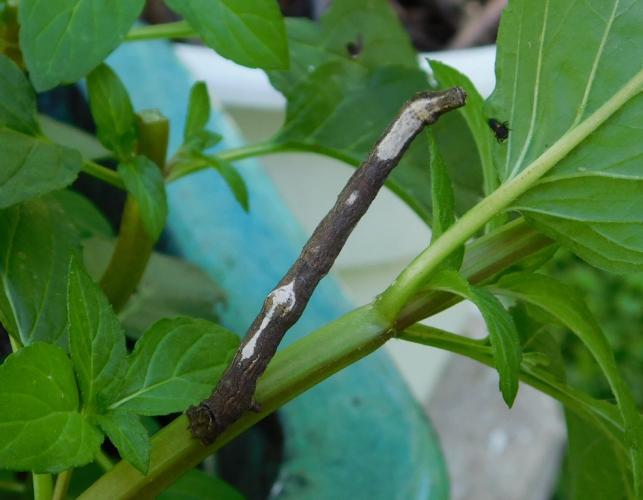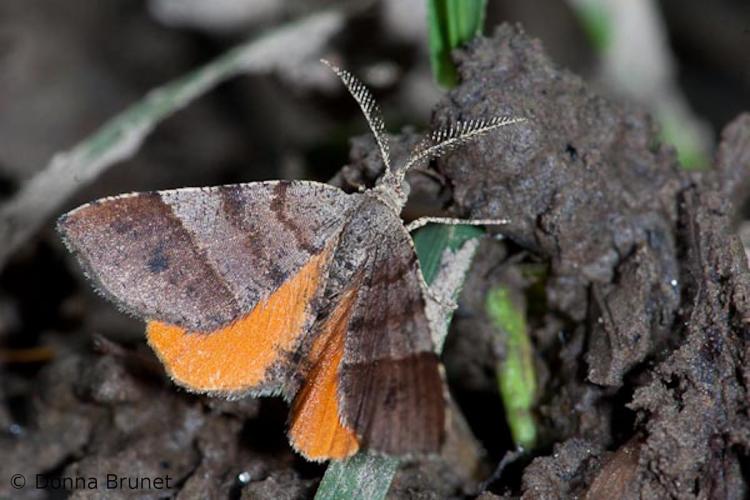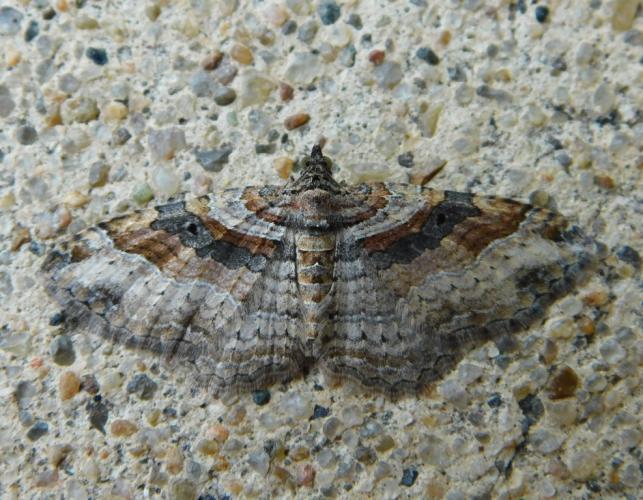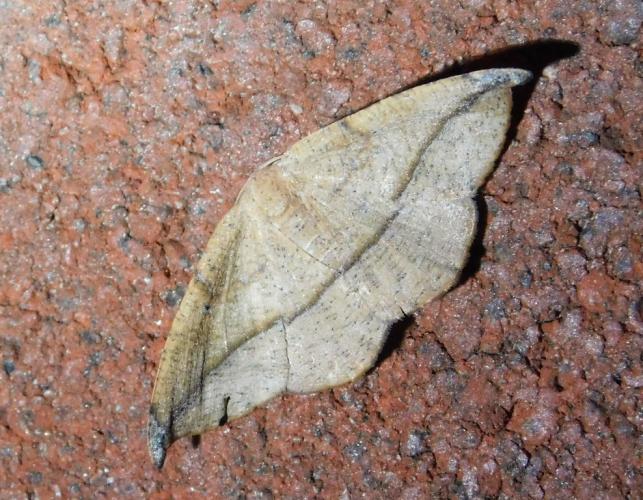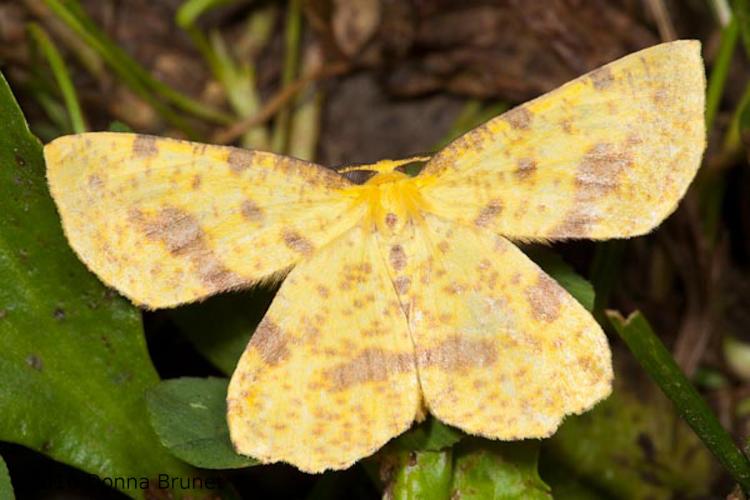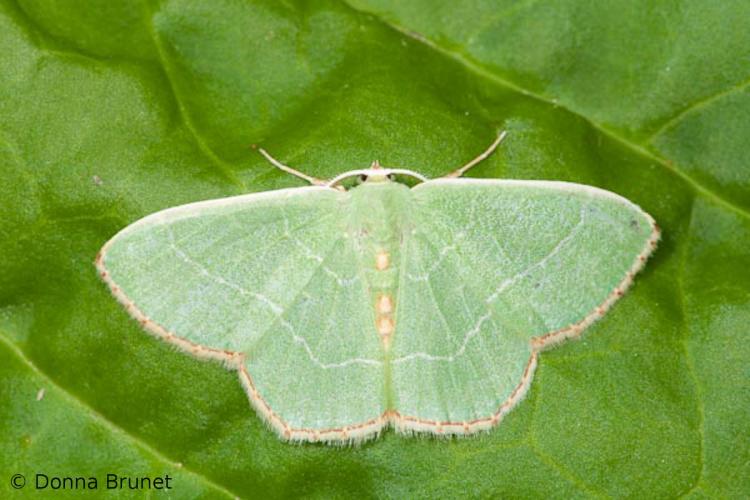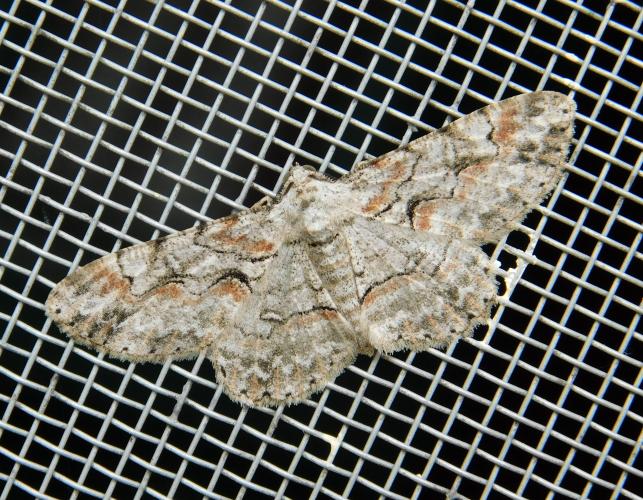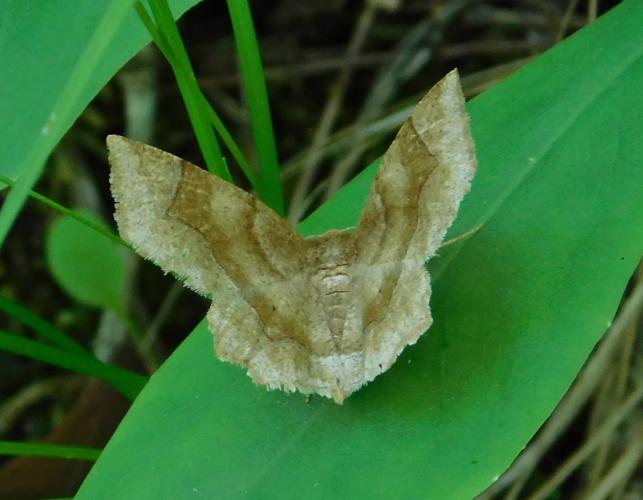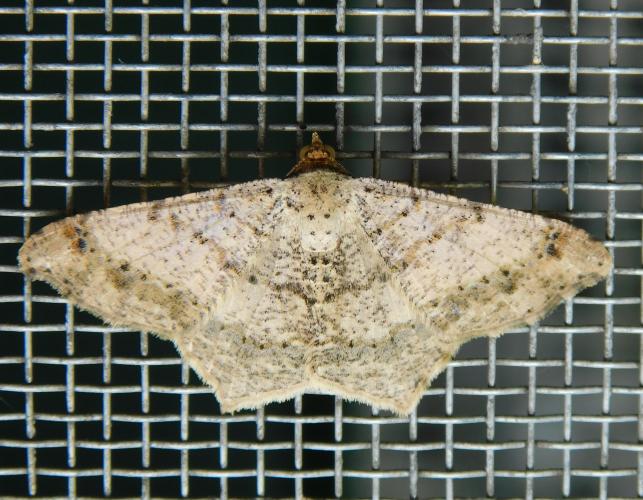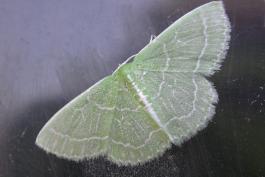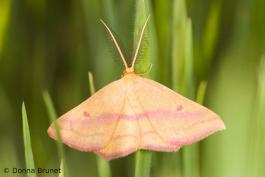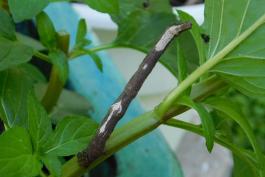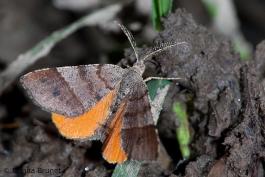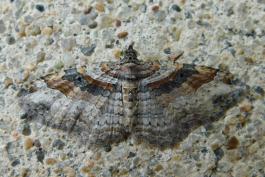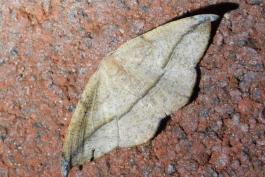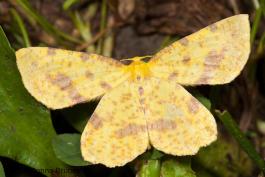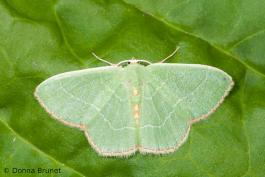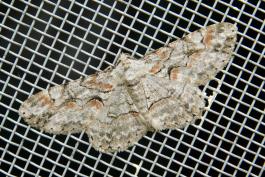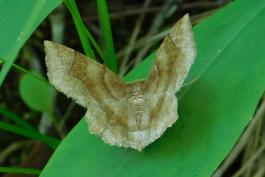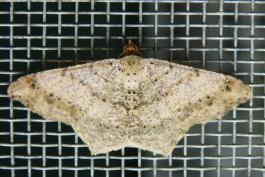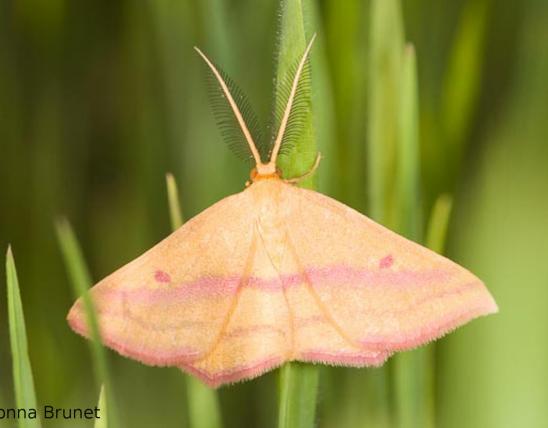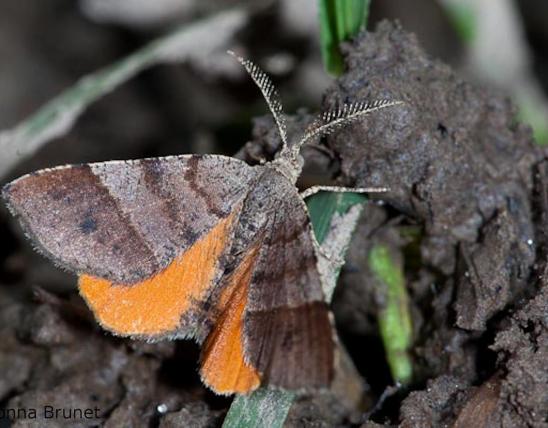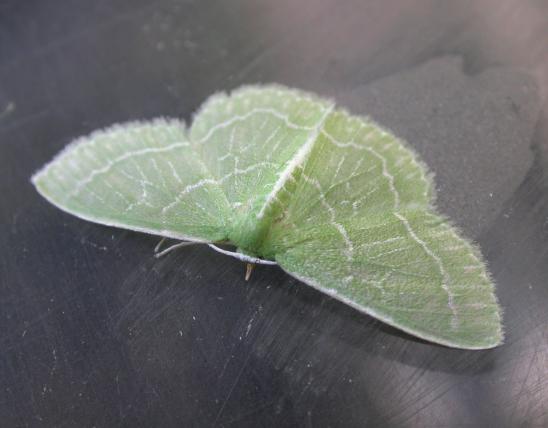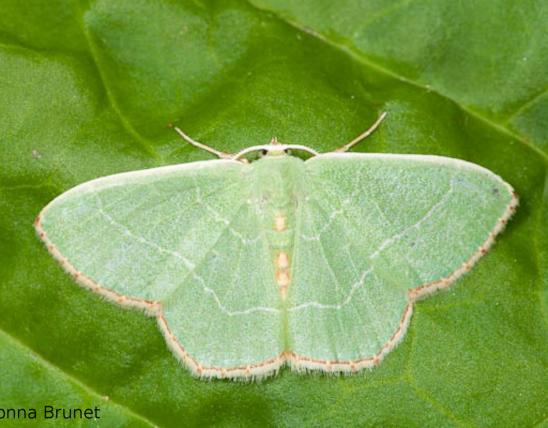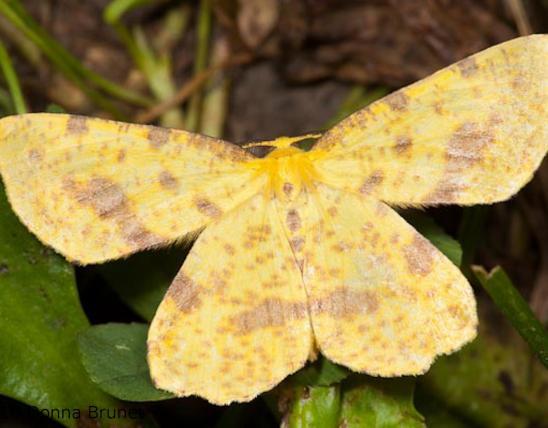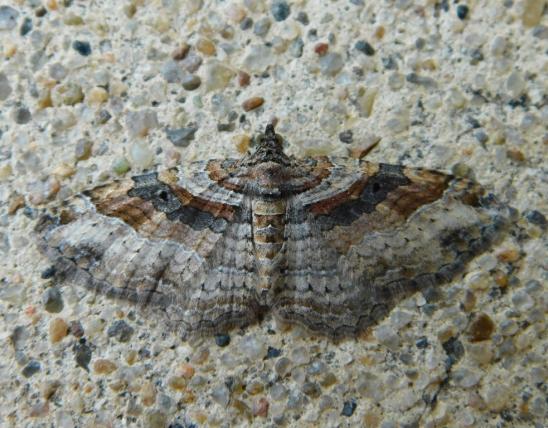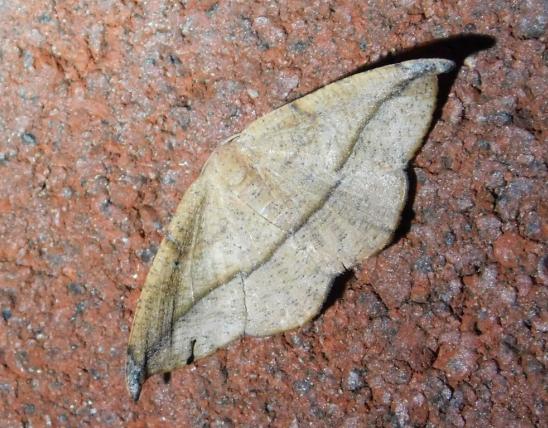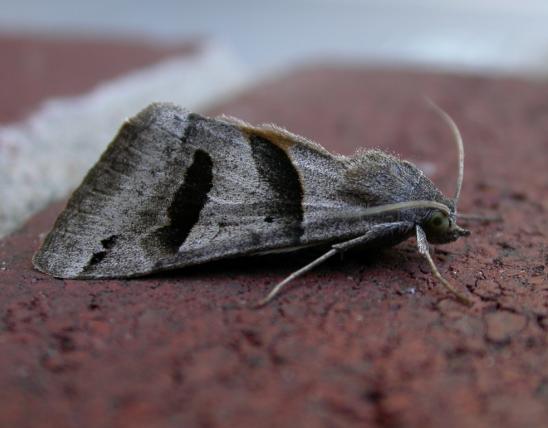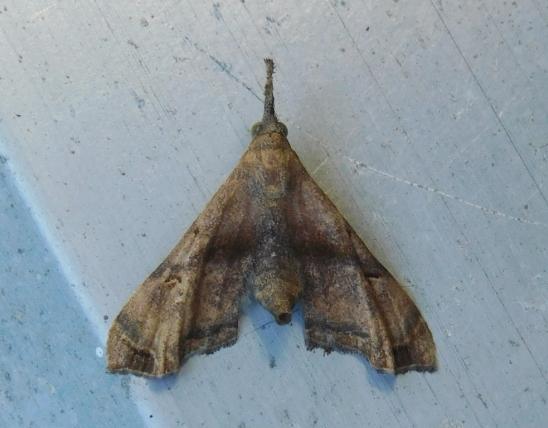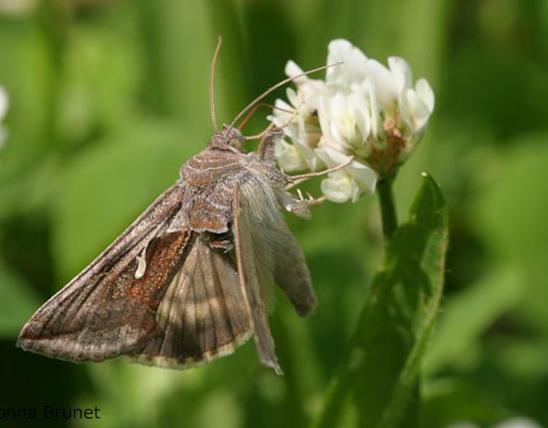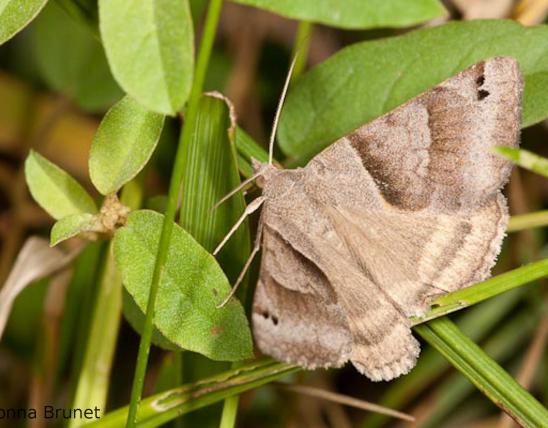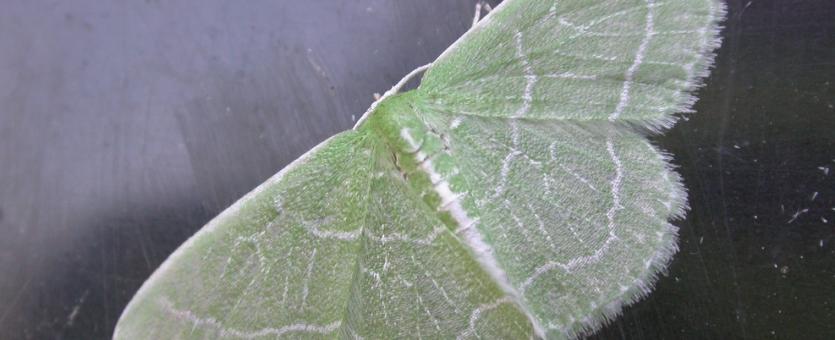
Adult geometrid moths have thin bodies and usually hold their wide wings spread flat out to the sides; a few species will hold their wings above their body in a “V,” like a butterfly. There is great diversity in the color, shape, and size of members in this huge moth family. Many have camouflage coloration and patterns, and the patterns on the forewings and hindwings are often matched so that when the moth is resting, the lines appear continuous across all four wings. Some species have pointed forewings and scalloped wing edges. Male geometrids have feathery antennae, while females have thin filaments. Some Missouri species have wingless females. Many geometrids have a fluttering flight.
Examples include the chickweed geometer, orange wing, wavy-lined emerald, spring and fall cankerworms, great bark geometer, and curve-toothed geometer.
The caterpillars of geometers (“earth measurers”) are the familiar inchworms that hump their backs (forming a “loop”) when they move the rear set of legs up to the front set, before moving the front set forward for the next “step.” Geometrid caterpillars lack several of the midbody legs found in most other moth families, which explains this mode of “walking.” Geometrid caterpillars are typically long and slender and have camouflage colors of green or brown plus bumpy patterns and rings that make them look exactly like tiny twigs. This mimicry is enhanced by their habit of resting in a slanted, stiff, straight, twiglike posture.
Similar species: Adult hooktip moths (family Drepanidae) hold their wings similarly, but they have hooks at the tips of their forewings. Some erebid moths (family Erebidae) have wing patterns that continue from the forewings onto the hindwings. Many species of pyralid moths (family Pyralidae) have the overall shape of geometrids, but the abdomen of pyralids frequently extends past the hindwings in a resting position, while the abdomen of most geometrids does not extend past the hindwings.
Not all “loopers” are geometrids. Some, like the cabbage, soybean, clover, bilobed, and celery looper moths, are in the noctuid family. Their caterpillars have the same method of “walking.”
Wingspan: ½ to 2½ inches (varies with species).
Statewide.
Habitat and Conservation
Geometrid moths occur in a variety of habitats. Like other moths, the caterpillars of any particular species may be limited to certain types of plants, so knowing the larval host plants may help you find caterpillars as well as egg-laying adult females and the males that court them. Some geometrid species eat a very wide variety of host plants.
Like most other moths, adult geometrids often are attracted to lights at night.
Food
For their caterpillar food plants, most geometer species use several types of trees and shrubs, either deciduous or coniferous, although some species use herbaceous plants.
Status
At least one species of geometrid moth has been listed as a Missouri Species of Conservation Concern: Lytrosis permagnaria, which has no common name. It is grayish with scalloped wing edges and a rather bold dark postmedian line on all wings. Its larvae eat red oaks, and apparently hickories, but the adults have a very short flight period in May or June, with only one brood a year. They tend to have a scattered, localized occurrence.
Life Cycle
Although some adult geometrids fly by day, most are nocturnal. Eggs are deposited on suitable host plants (usually trees or shrubs), and the caterpillars feed on the plant’s leaves. The larvae of most species of geometrids move to the ground — often descending on a single silken strand — beneath their host tree to pupate in leaf litter or below ground.
Human Connections
You may have seen a small thin “inchworm” caterpillar drift down on a silk strand from a tree above. If it lands on you, it may start “walking” on you. There’s plenty of folklore about inchworms. One myth says that if you find one walking on your clothes, it’s a sign you’ll soon have new garments. Another held that if an inchworm walks on you, it’s measuring you for your coffin!
The popular song “Inchworm” was introduced in the 1952 movie musical Hans Christian Andersen. In the movie’s fanciful depiction of the Danish writer’s life, the “inchworm” song likens the caterpillar’s inability to comprehend the “big picture” to the short-sightedness that people can have: “Inchworm, inchworm, measuring the marigolds / Seems to me you’d stop and see how beautiful they are.”
Although moths are usually stereotyped as drab and uninteresting (compared to butterflies, anyway) many geometrids are colorful or ornate enough to be mistaken for butterflies. Geometrids in the emerald moth subfamily (the Geometrinae) are good examples; they are typically a lovely bluish green.
Among the forest and agricultural pests in the geometrid family are the spring cankerworm (Paleacrita vernata) and fall cankerworm (Alsophila pometaria), which feed on a variety of hardwood trees, including oaks and members of the rose family (such as apples). In years of very large outbreaks, they can completely defoliate trees. The trees usually produce a second set of leaves, but doing so weakens them. Female cankerworm moths, interestingly, are wingless; they crawl rapidly over the trunk and branches of host trees. The moths of spring cankerworm hatch very early and are usually entirely gone by the end of April. Fall cankerworm adults are present only in the fall; their eggs overwinter and the larvae hatch when leaves start appearing in spring.
Ecosystem Connections
The incredibly convincing twig mimicry of geometrid caterpillars reminds us that they are prey to visual predators, especially birds. This helps explain why vireos, warblers, chickadees, wrens, and other “worm-eating” birds spend so much time carefully inspecting tree leaves and twigs!
Most geometrid adults are camouflaged, too, with their mottled and speckled grays, tans, and browns. They are perfectly hidden when they rest on tree bark or amid fallen leaves. We usually only notice them when they rest on the sides of our houses!
The pepper and salt geometer, also called the peppered moth, is a globally widespread geometrid species. It is a famous example of how natural selection works. During the Industrial Revolution in Europe, its populations came to be dominated by previously rare dark-colored forms. During the day, this moth rests on lichen-covered and light-colored branches and trunks of trees, where its usual coloration — speckled light gray — helps conceal it from hunting birds. During the 1800s, when air pollution and coal soot blackened tree bark and killed off lichens in cities, a blackish form of the moth came to be most numerous in city populations, as the light-colored individuals, now conspicuous against a dark background, were easily found and eaten by birds. The changing environment made it harder for the light-colored forms to survive and reproduce as well as the dark forms, so the dark form soon began to predominate.
At least one genus of geometrid moths are carnivorous — a food source that is very unusual for moths. The twiglike caterpillars of three Hawaiian species in genus Eupithecia seize and eat insects that bump into them.
